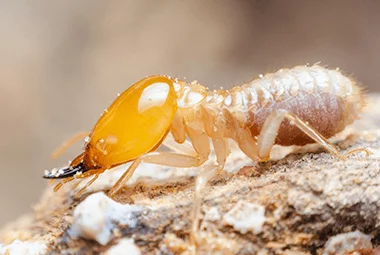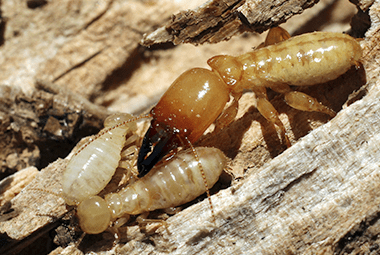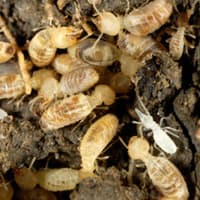When it comes to pests, there is a wide range of dangers associated with them, depending on what type of pest they are. Some pests are simply nuisances meaning that they don’t transmit illnesses and don’t do a great deal of damage, but are simply annoying to have around. Other pests are dangerous to humans and may bite, sting, or transmit serious diseases. Then there are the pests that don’t transmit diseases, but cause damages to homes that can be expensive and in some cases, irreparable.
The greatest offender of this third type of pest is the termite. While termites rarely cause bodily harm to humans in the form of bites or stings and are not known to spread diseases, they do cause billions of dollars in damage to homes in the United States every single year!
The biggest problem with termites and the reason they can cause so much damage is that they usually remain undetected for far too long. Oftentimes, by the time homeowners recognize that they have a termite problem, the termites have been causing damages to their homes for years!
In order to avoid termites and the damage they cause, it’s vital that you are proactive in taking measures to prevent them from invading your home, but you should first look for the signs of termites to make sure you don’t already have a termite problem.
Signs of a Termite Infestation
If you have a termite problem, the chances that you’ll see an actual termite are very slim. The greatest chance you have of seeing termites is when they are swarming. This typically occurs in the spring when a large number of the reproductive members of a colony come into plain view to find a mate and form a new colony. You can identify swarmers by their two sets of long white wings and by the fact that you’ll likely see a large cluster of these winged termites. If you see a termite swarm outside your home, your home may be at risk of a termite infestation.
Other signs of a termite infestation are so subtle that even some trained home inspectors or other professionals may miss them! One sign is long grooves created inside of the wood of your home. You typically wouldn’t notice this unless you’re doing renovations to your home. If you knock on a wooden beam and it sounds hollow or break off a piece of wood from your home and it feels light or hollow, you may have a termite problem.
Finally, if you have a major termite problem, you may notice peeling wallpaper, sagging floors or ceilings, windows and doors that won’t open or close properly, and bulging walls. If you see any of these warning signs, it may be time for a termite inspection.
How to Prevent Termites
Termites are attracted to moisture so it is very important to keep your home and surroundings as dry as possible. Establish good drainage systems around your property, repair any leaky pipes immediately, and replace any water damaged wood. In addition, here are a few other things you can do to deter these wood-destroying pests:
- Keep wood and brush piles a distance away from your home and as dry as possible.
- Remove dead trees from your property.
- Keep your gutters cleaned out and free of debris.
- Keep mulch at least two feet away from your home.
- Most importantly, consider taking preventative measures in the form of termite prevention from Russell’s Pest Control!
Russell’s offers a comprehensive termite control service built around the Sentricon® System with Always Active™. As its name suggests, this system not only eliminates current termite colonies, it also constantly works to prevent future colonies from forming and invading your home.
Take action today to prevent costly damage tomorrow. Give us a call at Russell’s Pest Control today!


